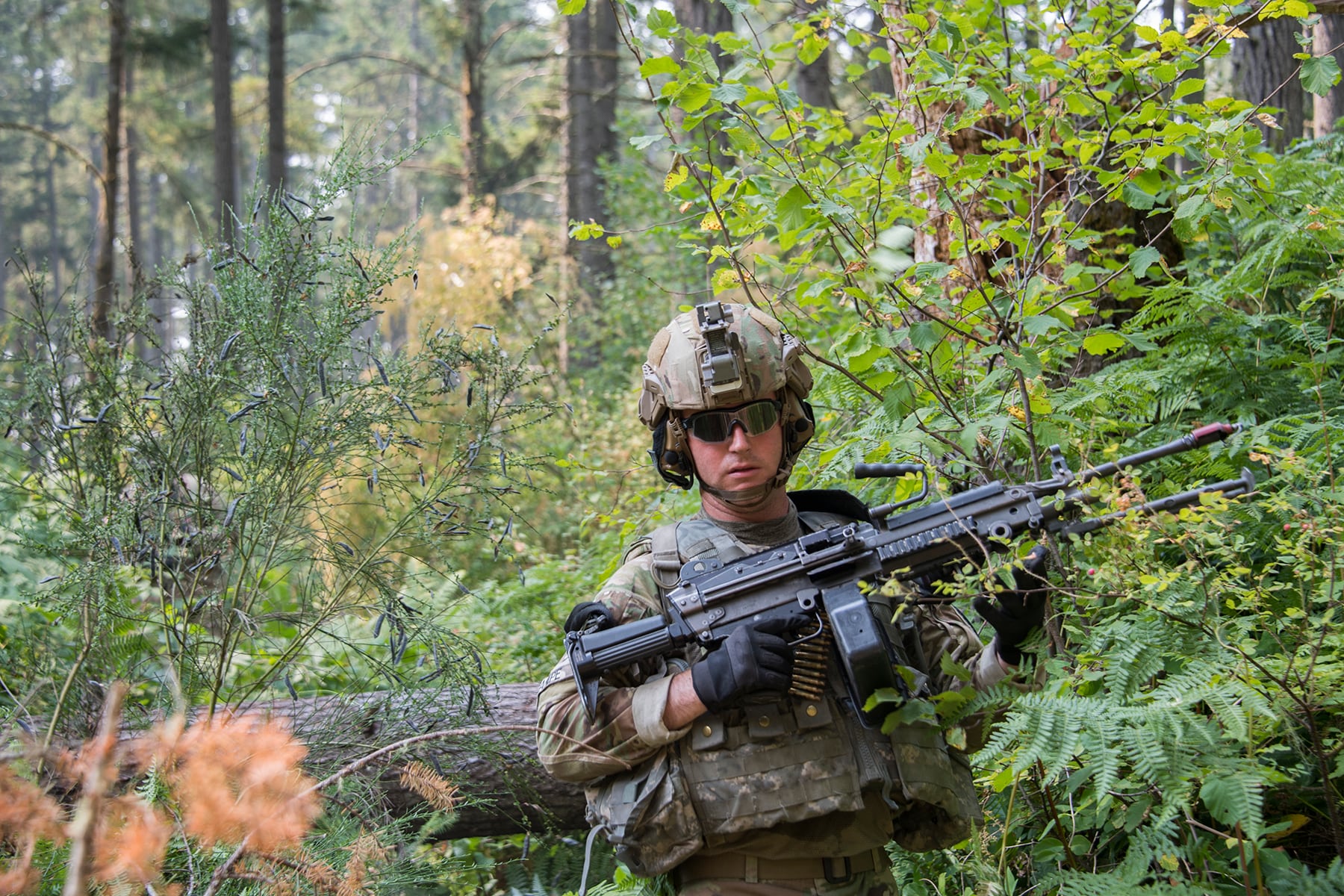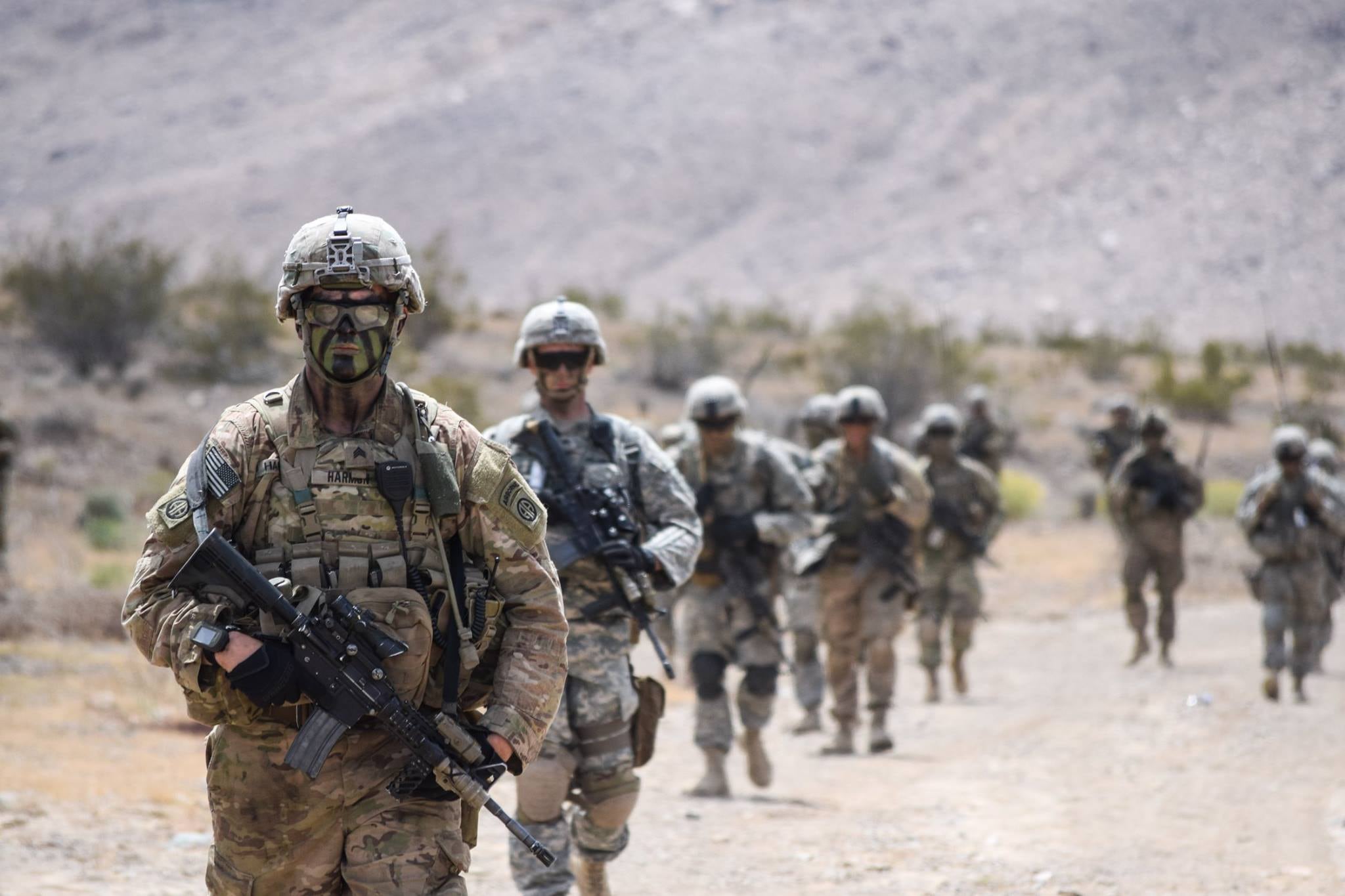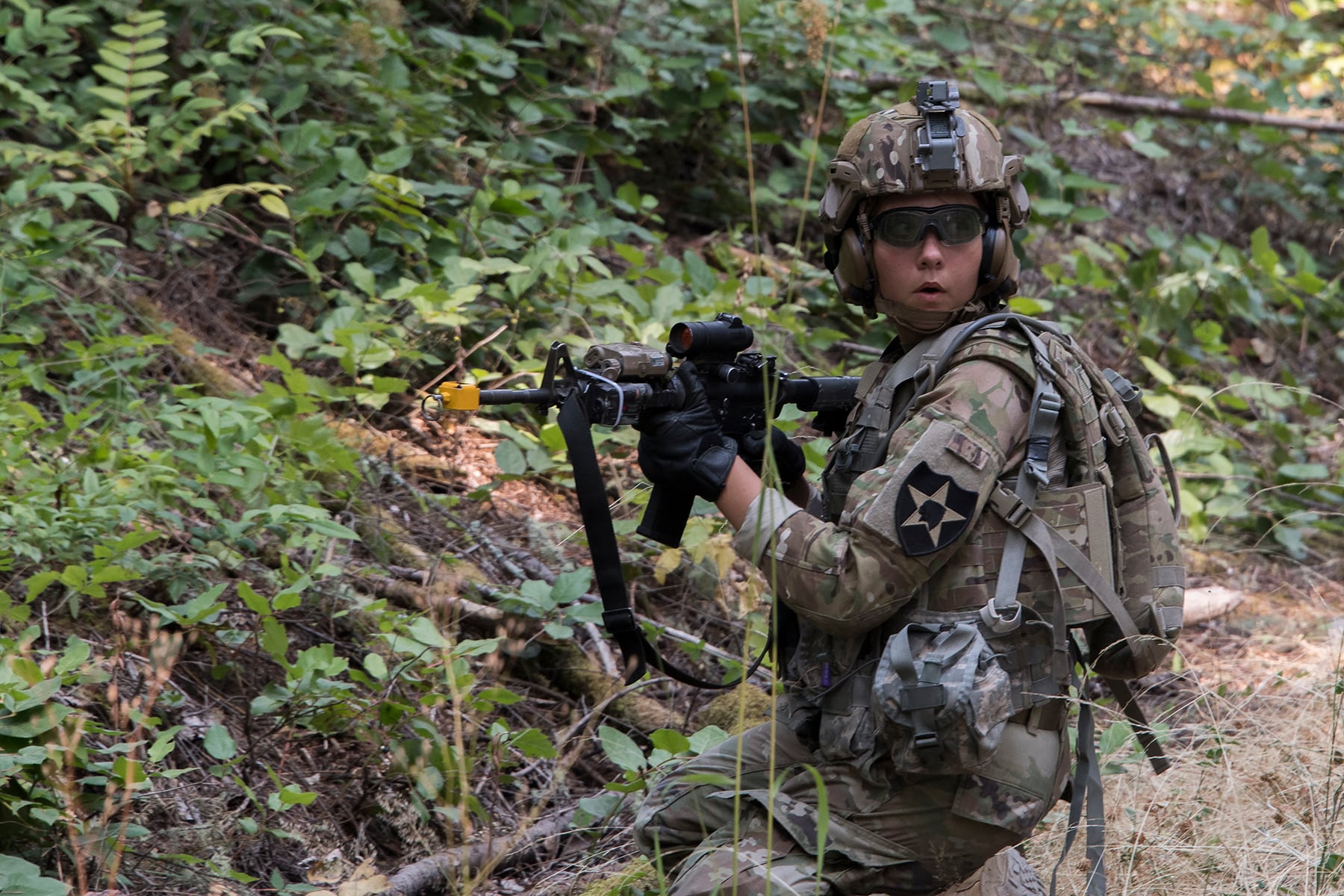JOINT BASE LEWIS-MCCHORD, Washington — More than 100 soldiers are testing the Army’s potential replacement for the Advanced Combat Helmet and Enhanced Combat Helmet.
The 111 combat engineers — including 15 female soldiers — will wear the Integrated Head Protection System, which resembles a motorcycle helmet, during training at Joint Base Lewis-McChord.
Officials here worked with the U.S. Army Operational Test Command out of Fort Hood, Texas, to merge the soldiers’ training requirements with the command’s testing requirements for the IHPS.
The pilot test, or dress rehearsal for the record test, began Aug. 3 in preparation for the official test Aug. 14-31.
The original plan was to test the IHPS with infantry units, but when none were available, test officers realized combat engineers perform some of the same tasks when it comes to attack and defense, according to Zane Smith, the IHPS test officer with Operational Test Command.
“We incorporated that into the test and also allowed them to do engineer-specific things,” like setting up obstacles, defeating obstacles and placing mines, Smith told Army Times on Aug. 3.
The squads, which include soldiers based in Washington and Hawaii, will conduct training wearing the new helmets before returning to a tactical assembly area to provide feedback for the data-collection team.
“We’ll perform a quality-control check right there,” Smith said. “This allows us to keep that process close to the soldiers.”
When Army Times observed the testing on Aug. 3, multiple squads of soldiers took turns going through the woods and across an open field on a dismounted patrol, while soldiers in Strykers provided security. The soldiers also had to fight their way through simulated enemy fire.

Staff Sgt. James McQuillan, a combat engineer with the 23rd Brigade Engineer Battalion, 1-2 Stryker Brigade Combat Team, 7th Infantry Division at JBLM, told Army Times he could feel the IHPS was lighter as soon as he put it on.
“I’m pretty glad that the Army’s trying to change some things up,” he said. “If we test this out and it ends up working out for us, then it’ll benefit people here in the future.”
McQuillan added that the chinstrap doesn’t twist up like it sometimes does with the other helmets.
Spc. Luke Kubiak, a combat engineer with the 95th Engineer Company, 84th Engineer Battalion, 130th Engineer Brigade, out of Schofield Barracks in Hawaii, has a few suggestions already.
“The padding is something that could really be improved,” he said.
A brow band for the padding would help, Kubiak said, because not everyone has the same shaped head, and the current configuration cuts off his circulation.
The mandible, or piece that provides lower jaw protection, makes it difficult to aim, he said.
“If we’re outside the vehicle, we’ll take the visor and the mandible off,” he added.
RELATED

Pvt. Jose Mendoza, a combat engineer also with the 95th Engineer Company, said he prefers the extra padding in the IHPS.
“I feel like if I were to possibly get blown up by something, it would be a little safer,” he said, adding that the visor protects him from dirt and fragmentation when he’s riding in a vehicle.
The soldiers will fill out a form with questions about how the helmet performed and how it felt, and if a comment isn’t clear or an answer is left blank, the data-collection team can follow up with that soldier on the spot to get the most accurate feedback.
Some of the soldiers also will be testing the Tactical Communications and Protective System-Lite (TCAPS-Lite), which resemble earbuds. These allow soldiers to communicate in combat while protecting their hearing when there’s a damaging level of noise.
“Soldiers can still talk amongst each other, but once there’s a higher impulse noise, it cuts off,” said John Jimenez, the TCAPS test officer from Operational Test Command.
Lt. Col. Nicholas Melin, the 23rd BEB commander, said the tests are a great training opportunity for his soldiers.
“Not only are we helping the Army out, but we’re progressing on our glide path toward readiness,” he said.
The feedback and data will be turned into an official report, and if all goes according to plan, the project manager’s full-rate production system is scheduled for June 2018, according to Smith, the IHPS test officer.
After production is scaled up, the IHPS can be fielded to more units and could be available to all soldiers by 2020.
The IHPS, which aims to fully protect a soldier’s head, is four years in the making and falls under Program Executive Office Soldier.
Troops can attach add-ons to the base helmet, including a piece that protects the lower jaw, and a protective layer that attaches to the top. The system can be tailored to fit a soldier’s needs. For example, the full face mask likely will be used mostly by vehicle gunners.
The IHPS also currently has a Picatinny rail mounted on the side for attaching gear, and it also will allow soldiers to attach head-mounted night vision goggles, the Army said.
Soldiers who are deploying will receive the base helmet, but they also will get the attachments based on their mission and military occupational specialty.
For example, vehicle gunners will get the lower jaw add-on, as well as the protective layer for the top of the helmet.
Charlsy is a Reporter and Engagement Manager for Military Times. Email her at cpanzino@militarytimes.com.





